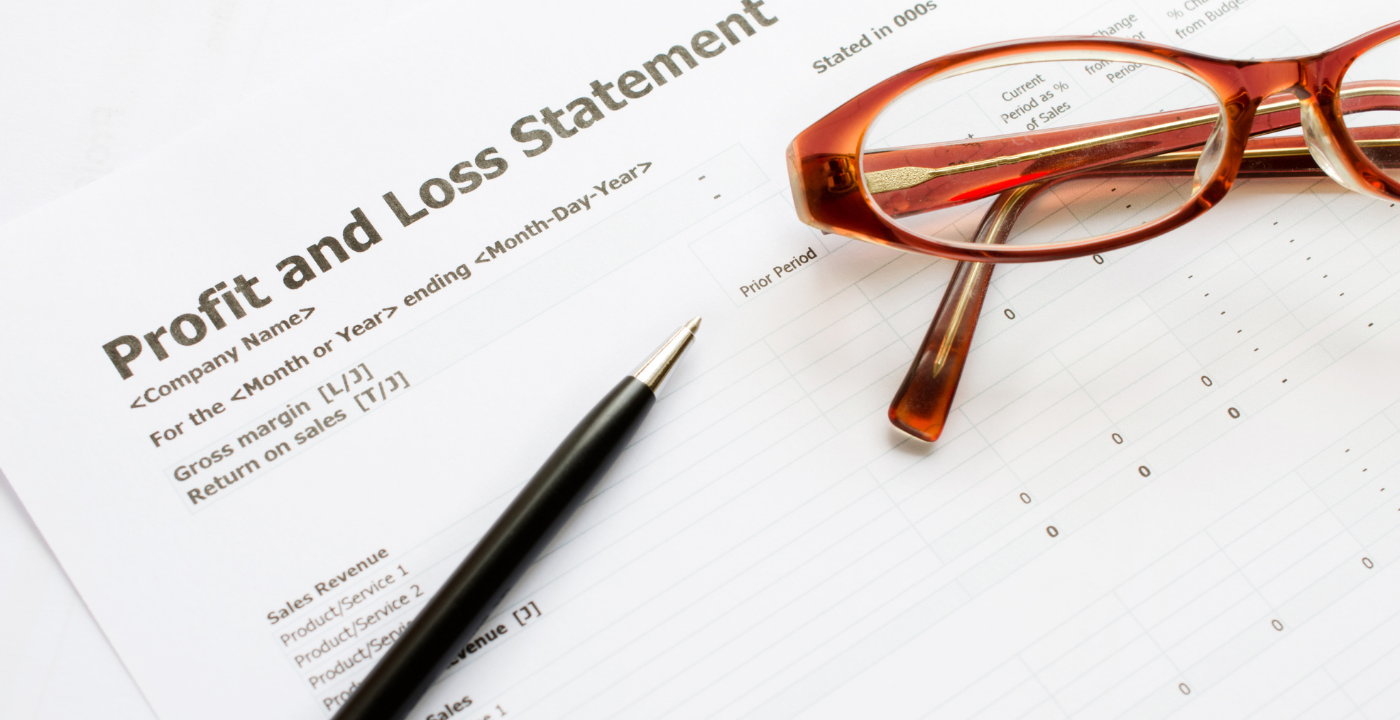I have many clients whom I send monthly Profit and Loss reports to. When I send these, I accompany it with some narrative around what this means in terms of business tax and a suggestion of what should be put to one side for that particular month.
I also incorporate some VAT liability planning, by looking at what the VAT Return looks like for the period to date, again, to try to prepare the business owner for the upcoming VAT payment due.
I also look at what the director has drawn out of the business, how that sits with our initial remuneration plan, and what that means from a personal tax perspective, and what impact that might have on their self-assessment liability.
However, I’m certain that there are many business owners who look at their accounts and don’t really know what they’re looking at or what they should be paying closer attention to.
So, the purpose of this blog is to help you get better at reading a Profit and Loss, so you know what to look out for to help you grow a successful business.
Turnover
This is probably the first thing that any business owner looks at. Turnover is your sales. What sales have you made this month? Has it been a good month?
This is the best metric for understanding your business growth. If your turnover is higher than it was previously, your business is probably growing.
Remember that this figure represents invoices raised. In many businesses, the cash inflow will follow at a later date. So, make sure that you understand that an increase in sales doesn’t necessarily equal more cash in the bank.
Depending on where your business is in its life cycle, you may want to keep an eye on your rolling 12-month turnover. Once this figure goes over £85,000, you may need to register for VAT and it is important that you plan for that and understand what it means to your profitability and cash flow.
Gross Profit
Your gross profit is the profit left after your ‘directly attributable’ costs. In your accounts, these costs would be called ‘Cost of Sales’. It basically tells you how much it directly costs you to earn each pound, and therefore what you have left. So, for example, if your business manufactures wooden tables, the direct costs would be the wood, glue, screws, etc. It should also include wages for production staff, as you need to pay these people if you want them to produce. Your gross profit would be what’s left after these costs.
Costs that are fixed (also called overheads) do not belong here as they are incurred regardless of the levels of production. Examples of these costs are wages for administrative staff, utilities, insurance, etc. These costs are shown later on in the Profit and Loss report.
You should monitor your Gross Profit % (Gross Profit divided by turnover) as reductions in this % could indicate your businesses costs are increasing at a greater rate than your sales. For example, this could show that you haven’t been forwarding material price increases onto your customers.
The easiest way to increase overall profitability is to focus on increasing your Gross Profit:
- Are you able to increase your selling price?
- Can you get better discounts on materials?
- Can you improve your efficiencies to decrease your man hours?

Overheads
As mentioned above, there will be a large section in your accounts relating to overheads. These are costs that are (generally) fixed, regardless of the level of production in your business.
These costs would include rent, rates, utilities, insurance, repairs to property and machinery, accountancy, motor expenses, travelling and subsistence, software costs, etc.
As discussed in a previous blog – ‘Do you know when you’ll break even?’, understanding how much your business spends on these fixed costs will help you to determine how many sales you need to make (taking into account what Gross Profit is earned on each sale) to cover your fixed costs.
These costs should be reviewed regularly, comparing month on month, to identify any specific increases and to understand why the cost may have increased and what could be done to reduce them.
Business owners often find old software subscriptions they no longer use but which they are paying for month on month. They may decide, following a review, that they are paying for various marketing costs which aren’t making the impact they had hoped for. Perhaps they need to sit down and re-evaluate their marketing strategy.
I like to present my clients with a month-by-month Profit and Loss report, showing the last 12 months. This way, they can see these costs side by side. This makes it easier to see variances which we can investigate sooner, rather than waiting until the end of the year.
Net Profit
Net profit is the most important figure on your Profit and Loss. This is the profit left after all costs are taken into account.
It is the figure used as the basis for your tax calculations. It is also this figure that, if you are a Limited Company, determined the level of dividends you can declare.
They say that turnover is vanity, profit is sanity. I see many multi-million pound turnover companies who make less net profit than someone turning over a few hundred thousand.
Make sure your focus is on your profitability. If you take on a new contract, but your profit doesn’t increase in line with the additional turnover, you need to understand what extra costs have been incurred as a result. It could be for a good reason – the new contract has meant that you need to take on an extra member of your administrative team. You need to be aware of the reasons though. Does it make financial sense to take on that contract?
Don’t end up being a busy fool!
Now you know what your Profit and Loss Account is telling you, you can make better decisions to grow your business. If you would like regular management reports based on up-to-date information, please get in touch.
Just call on 01604 662670 or email [email protected]

Martin Crooke is a Partner at Kilby Fox Chartered Accountants in Northampton. Martin specialises in helping small business owners gain financial control of their lives so they can focus on what they do best.
